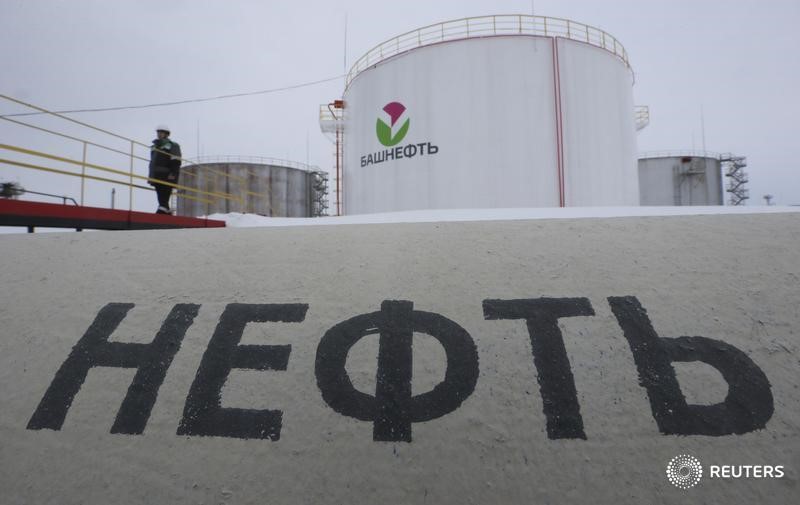By Barani Krishnan
Investing.com -- Oil markets jumped 2% on Friday as Russia hit back at the G7’s price caps by announcing production cuts and its own minimum price structure, while the global coalition behind the penalties warned the market against believing Moscow’s stunts.
Russia will cut oil production by 500,000 bpd, or barrels per day, accounting for 5% of its output, in March, Deputy Prime Minister and de facto energy minister Alexander Novak said. OPEC+, the alliance of 23 oil producers that Saudi Arabia leads with Russia’s assistance, wasn’t involved in the decision, Novak said. The United States singled out the Saudis for criticism last year when OPEC+ announced a 2-million-bpd cut in October.
Separately, the Kremlin plans to set a fixed $20 per barrel differential for its Urals crude to dated contracts of global benchmark Brent for “tax purposes”, energy industry officials in Moscow were quoted as saying by Reuters.
Russia currently uses Urals price assessments in Europe's Rotterdam and Augusta ports, provided by commodity price reporting agency Argus, to determine its mineral extraction tax, additional income tax, oil export duty and reverse excise on oil.
According to Russia's Finance Ministry, the average price of its Urals in January was $49.48 a barrel, down 42% from January 2022.
The G7+ responded swiftly to the Russian announcements, cautioning about the possibility of Moscow trying to pull off a stunt. “It is critical not to take Russian statements about oil production cuts at face value,” a so-called G7 Price Cap Coalition official was quoted saying by Reuters.
For context, OPEC+ countries have often put out more crude than they said, although under-investment in oil fields since the coronavirus pandemic has made it difficult for many to produce like before.
“Global energy markets remain stable, with benchmarks largely unchanged since the implementation of the crude cap in December,” the G7 official said. “According to public reporting, a large volume of Russian seaborne oil was delivered via price cap-compliant tankers.”
The official added that the price cap — of $60 per barrel on Russian crude and at $100 on diesel and $45 on fuel oil and naphtha — “continues to meet its dual objectives.”
The U.S. Treasury Department has repeatedly said that it wants to limit what the Kremlin can earn per barrel in order to squeeze Moscow’s funding for the war in Ukraine, while ensuring Russian oil supplies reach markets that need them.
On that score, the G7 official said “any Russian production cuts will disproportionately hurt developing countries.”
New York-traded West Texas Intermediate, or WTI, crude for March was up $1.66, or 2.1%, at $79.72 per barrel. The session high was $80.33, its loftiest since Jan. 30.
For the week, the U.S. crude benchmark was up almost 9%, overwriting last week’s 7.5% plunge.
London-traded Brent crude for March delivery finished the regular session up $1.89, or 2.2%, at $86.39, after a session peak at $86.89. Brent was up 8% on the week, erasing last week’s 7.5% decline.
Oil plunged last week on the back of recession fears and uncertainty in U.S. interest rates direction after bumper job and wage gains among Americans in January threatened to bump up inflation.
Since this week began, however, it has been rebounding on the premise that Chinese refiners would add exponentially to imports this month as the country returns from the long Lunar New Year break and into an environment free of COVID-19 restrictions which had previously hampered demand.
Chinese import data supporting such a market run-up will likely not emerge for weeks. Meanwhile, latest available data showed the world’s largest crude importer bought 10.98M bpd, or barrels per day, in January, down from December's 11.37M bpd and November's 11.42M bpd.
Running counter to the bullish sentiment were large builds across the board in crude, gasoline and distillates in the Weekly Petroleum Status Report released by the U.S. Energy Information Administration on Wednesday.
